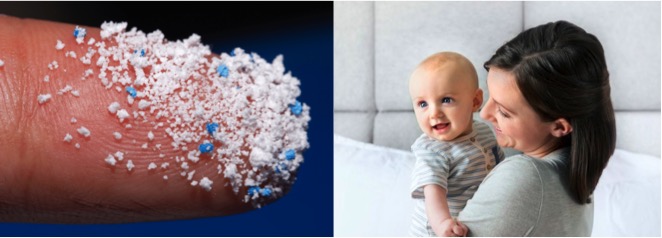Recent research has uncovered the presence of microplastics in breast milk. Ingestion through contaminated food, water and even airborne particles are possible ways of how microplastics find their way into breast milk.
Breast milk, often referred to as “liquid gold,” has long been celebrated for its essential nutrients and protective properties for infants. However, recent research has uncovered a concerning issue: the presence of microplastics in breast milk.
These tiny, nearly invisible particles originating from plastic pollution have raised alarm among scientists and mothers alike. Let’s delve into the increasing worry about microplastics in breast milk, the potential health risks associated with them, and the pressing necessity for more research and lasting solutions.
India Today spoke to Dr Manju Gupta, Senior Consultant Obstetrician and Gynaecologist, Motherhood Hospital, Noida, to shed light on this matter.
WHAT ARE MICROPLASTICS?
Microplastics are minute particles of plastic, measuring less than 5mm in size that result from the fragmentation of larger plastic items or are intentionally manufactured for personal care products like microbeads in cosmetics.
They enter the environment through various means, including improper waste disposal, degradation of plastic products, and the breakdown of synthetic textiles.
THE UNEXPECTED PRESENCE OF MICROPLASTICS
Many researchers have looked into whether microplastics are present in breast milk because they are so common in the environment. Multiple studies have proven that breast milk samples from various places around the world contain microplastics.
How microplastics find their way into breast milk remains uncertain, but potential routes include ingestion through contaminated food, water and even airborne particles.
HEALTH CONCERNS AND UNKNOWN RISKS
The health implications of consuming microplastics, particularly through breast milk, are still not fully understood. However, scientists are concerned about potential risks.
Microplastics can contain and absorb harmful chemicals, including toxic additives used in plastic manufacturing, and pollutants from the surrounding environment.
When ingested, these chemicals may leach into the body and possibly affect infants’ development and health.
One of the main worries is that endocrine disruption could happen, which can mess with hormones and growth, possibly resulting in long-term health problems.
THE ROLE OF PLASTIC WASTE AND RECYCLING
The surge in microplastics in breast milk reflects the alarming scale of plastic pollution globally. Plastic waste that ends up in oceans and rivers eventually breaks down into microplastics, entering the food chain through aquatic organisms. As humans consume these organisms, microplastics can find their way into human tissues, including breast tissue.
Addressing the problems of microplastics requires multiple strategies, particularly reducing plastic production, properly managing waste, and encouraging recycling.
STEPS TOWARD MITIGATION AND RESEARCH
To tackle the microplastic issue in breast milk, further research is imperative. Much long-term research is needed to determine the potential risks of microplastic exposure on infants and nursing mothers.
Regulations must be put in place to determine safe levels of microplastics in food, water, and items we buy.
Source : India Today Aug 8th 2023

